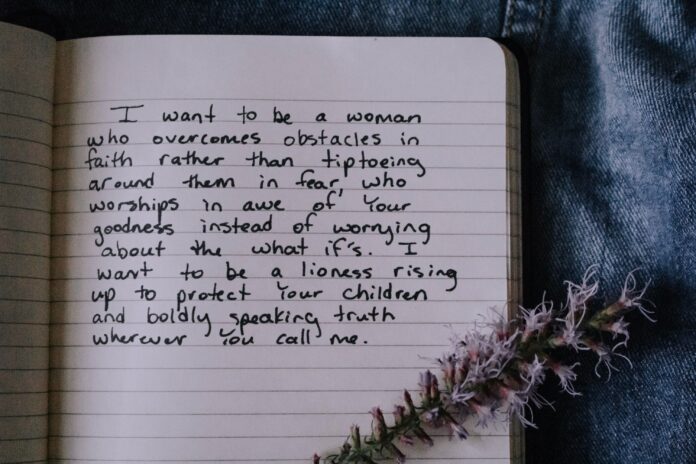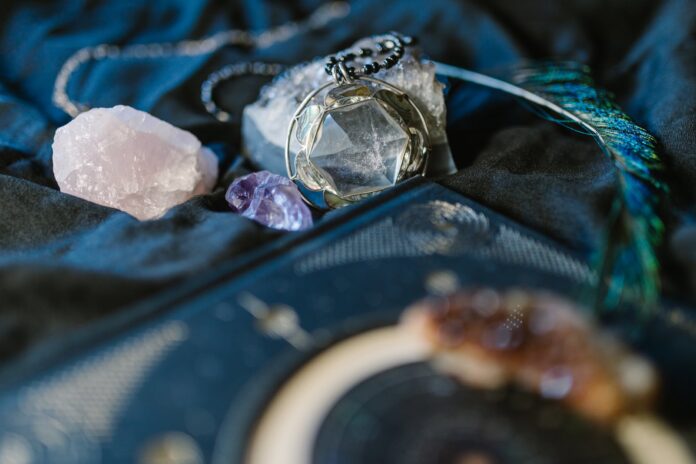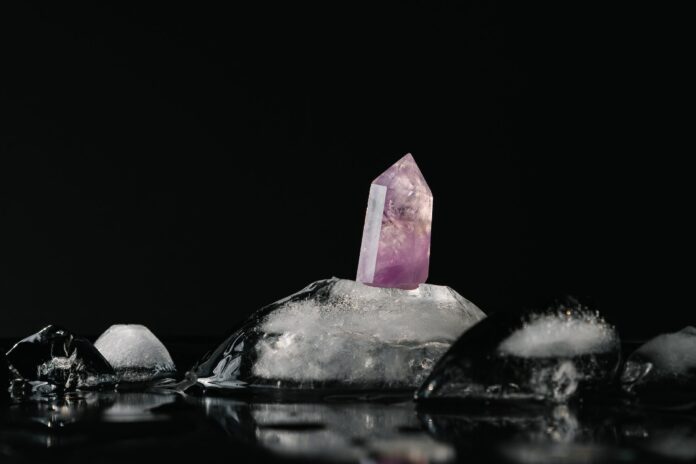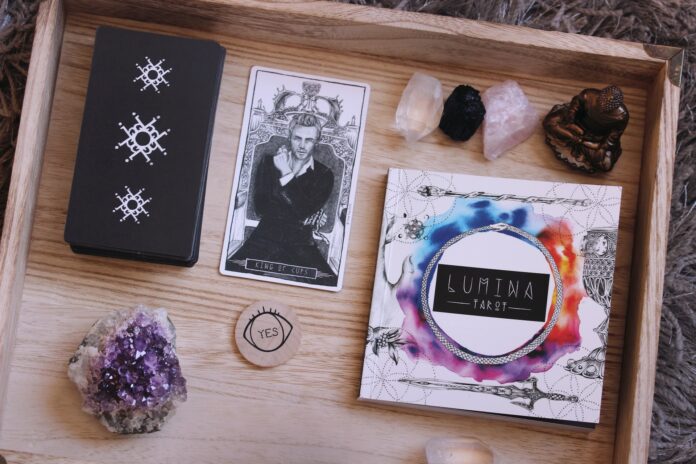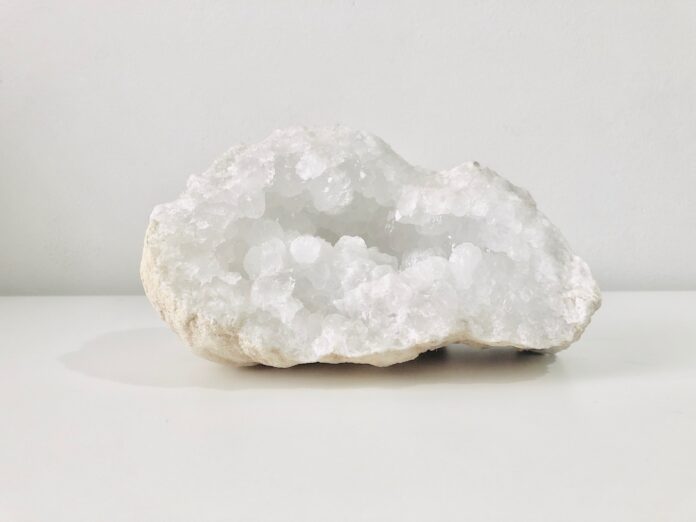How should you cleanse your crystals?
There’s many methods to clear your crystals of unwanted energy. While water and moonlight are the most popular, you can also delve into soil and rice techniques for cleansing stones.
In this article, you’ll learn 11 ways to cleanse your crystals, each with step-by-step instructions.
Table of Contents
Why Should You Cleanse Crystals?
Many people believe the energy from crystals benefits their body, mind and spiritual inner self. While these people see crystals as having magical energy, they also believe their energy can dim over time with continued use. To keep the energy from crystals clear, many recommend cleansing your crystals.
Physically cleanings your crystals removes debris, like dust that can accumulate. This can be done by washing or dusting crystals. Physically cleansing is a logical step to keep your home and crystals tidy.
Spiritually cleansing crystals is different. Through a variety of methods in this article, you can aim to clear their negative energy, hopefully making them more effective for healing.
Cleansing crystals is said to:
- Remove any negative energy from them
- Brighten their energy to facilitate better crystal healing
- Act as a shower, leaving the crystal pure and fresh
People cleanse crystals when they first receive them and frequently after.
Keep in mind that cleansing crystals aren’t always the solution. Sometimes crystals don’t work because there’s a more appropriate tool you can turn to for help. If you’re using crystals to deal with a particular issue, you should always seek professional and evidence-backed advice before turning to stones. Healing crystals are a spiritual tool, but cannot replace the services of a psychotherapist, doctor, lawyer or other professionals.
When Should You Cleanse Crystals?
Your next question might be, “when should I cleanse my crystals?”
There’s three main answers here: Cleanse them firstly, frequently and as needed.
Firstly, Cleanse New Crystals
Always cleanse crystals when you first receive them. Whether you buy them in store, get them in the mail or they’re gifted, always cleanse your crystals before using them.
Crystals can pick up energy throughout their process of getting to you. Whether its people packaging them, post office workers, or store associates, your crystal accumulates energy during its journey. Cleansing your new crystals gives them a fresh start.
Frequency of Cleansing Crystals
How often should you cleanse crystals?
The answer depends on who you talk to. Some people cleanse crystals once a week while others cleanse them once a month. Others keep their crystals on or near a piece of selenite, never ritually cleansing them (more on this later).
How often you cleanse crystals is up to you. How often are you using your crystals? Are you doing intensive work with them that requires more frequent cleansing? Are they instead being kept in a safe place where they’re unlikely to be affected by energy? There’s a lot of factors to consider when choosing how often cleansing should take place.
You could also decide to cleanse crystals in batches. For example, maybe not every crystal accumulated energy and needs to be cleaned.
Whatever you decide, try to stick to a schedule. For example, cleaning crystals once a month allows you to check in and remind yourself when they need a clean.
Cleansing Crystals As Needed
Along with having a schedule of crystals cleansing frequency, you can also cleanse them as needed. You might cleanse crystals as needed when:
- You’ve had a difficult week, which might affect the crystals you have in your home
- You’ve had challenging guests in your home, which might affect the crystals you have in your home
- You’ve done challenging work with your crystals
- You’ve had challenging discussions with family members, that might affect crystal energy
- You want to make sure a crystal has pure energy before using it for intense work
- You’re using a particular crystal more than usual
- A crystal is looking dull or lackluster
Basically, anytime you want your crystals to have a fresh start, cleanse them. For example, let’s say you keep a crystal on your desk at work and a negative coworkers comes into your office and leaves you drained. Even if you’ve already cleansed your crystals the night before, you might want to cleanse it again that day. That way, you can be confident the crystal is offering up fresh energy and isn’t diluted by your coworker’s energy.
Here’s another scenario: You’ve recently cleansed your crystal necklace but you’ve had a rough day. You look in the mirror and notice that the crystal looks duller than usual. This is a good time to cleanse your crystal to remove the “energetic debris” it’s earned throughout the day.
How to Cleanse Crystals

When it comes to how to cleanse crystals, there’s a variety of methods you can choose from. You might also use different methods to cleanse different crystals. How you cleanse crystals depends on:
- The type of crystal and its physical properties (for example, some crystals will be physically destroyed by water)
- Your preference
- How much time you have (i.e. leaving it out overnight vs. smoke cleansing immediately)
Keep scrolling to learn how to cleanse crystals in a variety of ways.
Water Wash
When learning how to cleanse crystals, washing with water is a favorite of many. That’s because using water energetically cleanses the crystal—but it also physically washes it too. It’s a good method to ensure your space is tidy, free of dust and also pure in energy.
Keep in mind that water is only suitable for some crystals. Other stones can be damaged when exposed to water. When in doubt, research your crystal to be sure.
How to cleanse crystals using water:
*Make sure crystal is safe to run under water
- Gather your crystals in front of a running tap
- Set your intention for crystal cleansing
- One by one, rub your crystals under water
- Let them dry on a T-towel
Smoke Cleansing
Smoke cleansing involves lighting dried herbs to produce smoke. That smoke is then spread over the objects you intend to energetically clear. The notion of smoke cleansing, or Smudging, comes from Indigenous Peoples. Indigenous people use herbs like sage to banish unwanted energies. It’s important to note that as smoke cleansing has become popular, there’s an increased need to ethically source the herbs you’re using. For example, white sage has become overharvested, affecting its sustainability, which is disrespectful toward North American Indigenous cultures.
Instead of using white sage, choose a herb that’s ethically grown in your area, such as cedar. You can bundle the herbs and burn them as a bundle. You can also put some herbs in a seashell and use the shell as a burning dish.
How to cleanse crystals using smoke cleansing:
- Place herbs in a shell or burnproof dish
- Set your intention for crystal cleansing
- Light your herbs
- Move the herb dish or bundle around, allowing the smoke to cover your crystals
Moonlight
Moonlight is another popular method to cleanse crystals. Some people only cleanse their crystals on full moon nights. This way, your crystals can absorb all the energy the full moon has to offer.
You don’t have to wait for a full moon though. You can leave your crystals out overnight any night. Since the mother moon provides benefits during all phases, place your stones out whenever the time is right.
How to cleanse crystals using moonlight:
- Place your crystals on a windowsill or in a dish by the windowsill
- Set your intention for crystal cleansing
- Let it absorb the moon’s cleansing energy throughout the night
- Gather your crystals the next day
Sunlight
Sunlight is also an easy method for beginners learning how to cleanse crystals. Like moonlight, simply letting your crystal bask in the light energy can rid it of unwanted vibrations.
How to cleanse crystals using sunlight:
- Place your crystals on a windowsill or in a dish by the windowsill at the beginning of the day
- Set your intention for crystal cleansing
- Let it absorb the sun’s cleansing energy throughout the day
- Gather your crystals at or before nightfall
Rice
Many people are familiar with this trick: when your phone or laptop gets water damage, stick it in a bag or container of rice. The rice will help absorb the water, hopefully getting your device to work again. Anyone who’s successfully used this trick knows that rice is a powerful absorbent. And that’s the theory behind using it to cleanse crystals.
Letting your crystals hang out in a container of rice can help lift their unwanted energies, leaving them renewed and refreshed.
How to cleanse crystals using rice:
- Fill a container or bag with dried rice (enough to cover your crystals)
- Set your intention for crystal cleansing
- Place your crystals in the bag or container
- Leave for at least 24 hours
- Take out crystals and recycle rice (we recommend saving it in case of a water-damaged device!)
Soil
Soil is an interesting way to cleanse your crystals. You might be particularly drawn to this method if you’re someone who loves to garden or is in tune with nature.
Since soil is from the earth, it’s a natural way to give your crystals the energy they’re missing. You might be wondering how to cleanse crystals with soil. You have two main choices: Burry them in your backyard (make sure to mark the spot!) or burry them in a container inside.
How to cleanse crystals using soil:
- Gather your crystals
- Set your intention for crystal cleansing
- Burry crystals an inch or two deep into soil (outside or in an indoor planter)
- Leave for at least 24 hours
- Dig up your cleansed crystals
Saltwater Soak
A saltwater soak is a less hands-on water cleansing method. Instead of running your crystals individually under water, you submerge them in a bowl of saltwater.
Keep in mind, water and salt aren’t safe for many crystals. Always research your crystal before exposing it to anything new!
How to cleanse crystals using salt water:
*Make sure crystals are safe to be submerged in saltwater
- In a bowl, gather saltwater from the ocean or make some using sea salt
- Set your intention for crystal cleansing
- Place crystals in the saltwater
- Leave for at least 24 hours
- Rinse crystals in fresh, non-salted water
Breath
Meditation breath can be used to cleanse crystals in a pinch. This is a method anyone can use anywhere! Particularly with this method, it’s critical to ensure you’re in a relaxed state so you can pour renewed energy back into your crystal.
How to cleanse crystals using breath:
- Meditate before cleansing crystals to ensure a calm, restorative state
- Hold your crystal or crystals in your hand
- Set your intention for crystal cleansing
- With your intention in mind, take 3 deep, long breaths. For each breath, exhale over your crystal to cleanse it.
- Release your renewed crystal
Sound
Sound is another overlooked method that you can consider if you’re wondering how to cleanse crystals. People believe that sound such as tuning forks, singing bowls or even clapping can provide a cleansing energy. Many times, sound healing is used to amp up your own vibrations. However, it can also be used to rid your crystals of unwanted energies.
How to cleanse crystals using sound:
- Set your crystals nearby the source of your sound (you can set them on a table and then create the sound over top of the crystals)
- Set your intention for crystal cleansing
- With your intention in mind, create sound nearby your crystals (using a singing bowl, tuning forks or hand clapping)
- Continue for at least one minute or until it feels your session is complete
Visualization
You can also cleanse crystals with visualization. This is another method that requires nothing but your crystals and your mind. However, if you’re not keen on visual meditations, this technique might not be your first choice.
How to cleanse crystals using:
- Gather your stones in front of you
- Start by getting into meditation, spending at least a few minutes breathing and clearing your thoughts
- Set your intention for crystal cleansing
- Visualize a white, pure smoke-like energy wafting over your crystals. Envision this smoke cleansing out any unwanted energy, leaving your crystals clear and refreshed.
- Close out your meditation with a few deep breaths
Selenite
Some people cleanse their crystals by placing them near a piece of selenite. You can store your crystals beside selenite to ensure they’re always cleansed. Or you can simply place them beside selenite only when they need to be cleansed. Selenite pieces, slabs, dishes or towers all work for this purpose.
Do you cleanse selenite itself? Some people believe that selenite needs to be cleansed to continue cleansing the other stones. (You can cleanse selenite using any of the methods above). Others believe that selenite is a special stone that’s self-cleaning, never needing to be formally cleansed.
How to cleanse crystals using selenite:
- Place crystals as close as possible to your selenite. This could mean placing crystals on top of a slab or in a selenite dish. It could also mean placing crystals closely around a piece of selenite
- Set your intention for crystal cleansing
- Leave crystals touching or beside selenite for at least 24 hours

Summary: How to Cleanse Crystals
There’s a variety of methods you can use to cleanse crystals. If you’re a beginner wondering how to cleanse crystals, using water, moonlight or sunlight are often the top choices. But there’s plenty of other ways to renew the energy your stones hold. Sound, visualization, soil and breath are all overlooked methods.






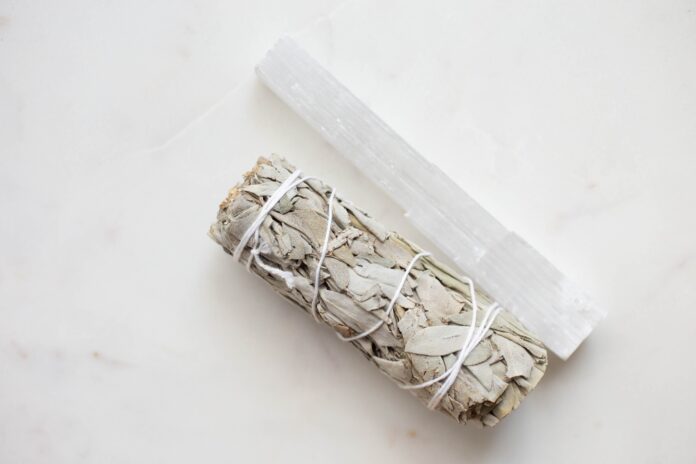
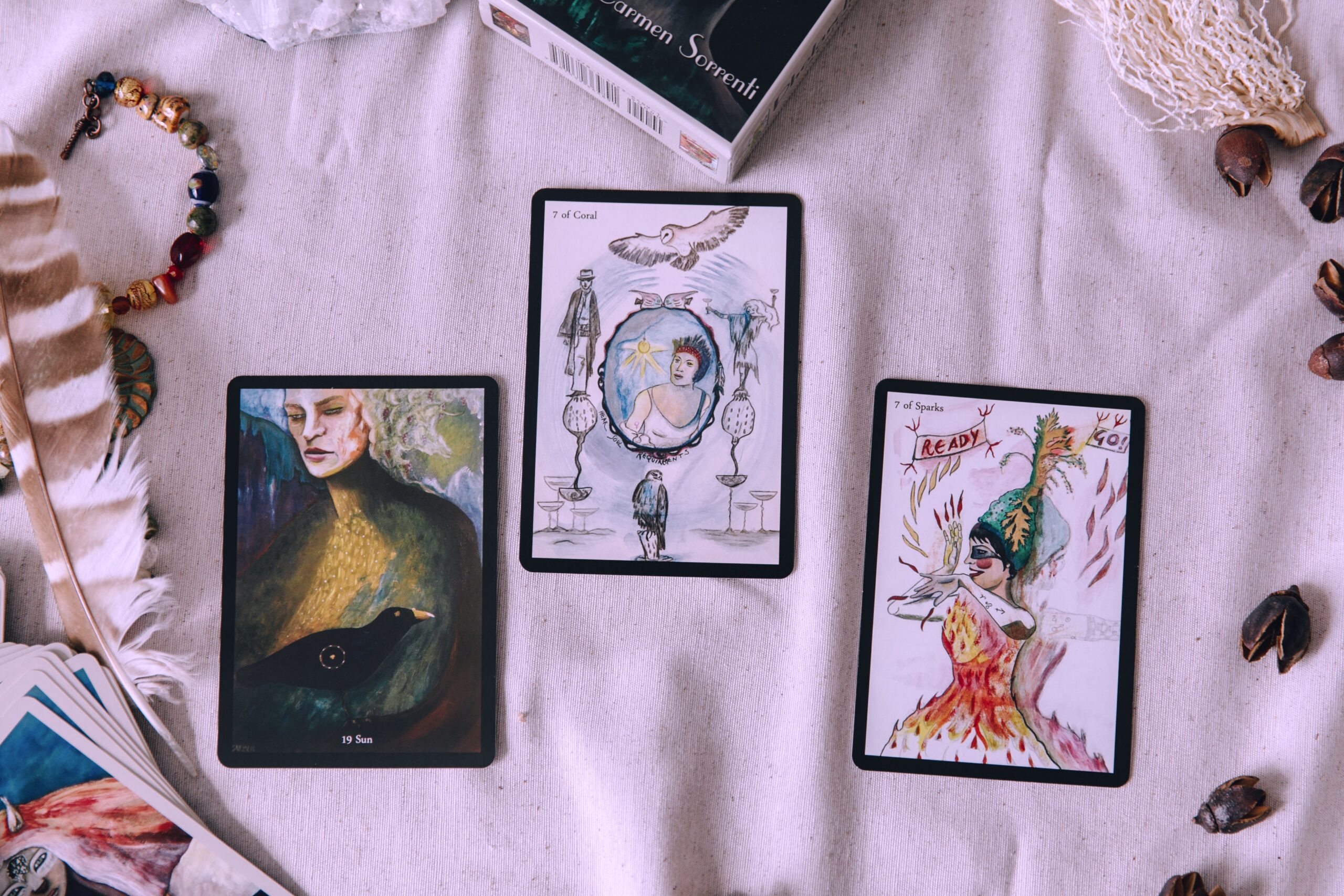











 “To live in hearts we leave behind is not to die.” -Thomas Campbell
“To live in hearts we leave behind is not to die.” -Thomas Campbell














 “I think about you. But I don’t say it anymore.” -Marguerite Duras
“I think about you. But I don’t say it anymore.” -Marguerite Duras





















